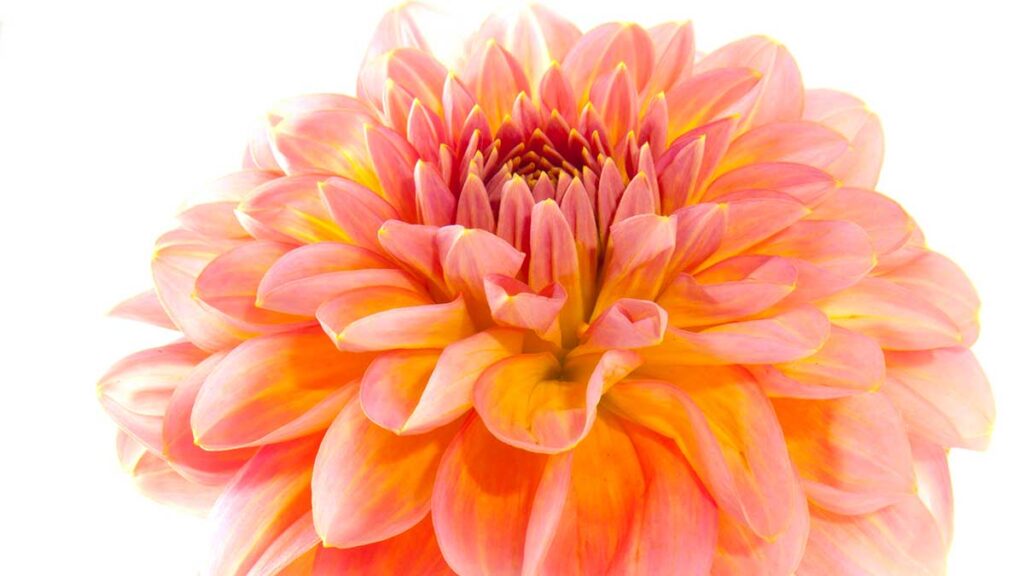Dahlias are divas! Despite this, they are worth every bit of work for the beauty they offer to the late summer and fall garden. A seemingly endless variety of forms and colors and sizes means every gardener can pick and choose what would best beautify their homes, indoors and out. A sturdy plant in the garden, the beautiful blooms can be cut and arranged indoors over a long blooming period.
Dahlias are tuberous herbaceous perennial plants, although in the mid-Atlantic area, their tubers are commonly dug and lifted in the fall. Mexican by origin, the earliest written reference to them is in the late 16th century. In the 18th century, Vincent Cervantes, director of the Mexico City botanical garden, sent dahlia plants to the director of the royal gardens in Madrid, Antonio Jose Cavanilles. After Mr. Cavanilles successfully grew them, he christened the plants dahlias after Swedish botanist Anders Dahl.
In the ensuing years, seeds were saved and sent to Italy and England, then Germany, France, and Russia, and now they are grown in many places worldwide. These fascinating plants can be started from seed or tuber. Tubers will produce flowers exactly like the plant they are from, but seeds from that same plant will produce an entirely new flower Ñ something that makes dahlia breeding a compelling hobby. They are hardy to USDA Zone 8, but bloom beautifully in many other Zones, including Zones 6 and 7. Many grow them to enjoy in the garden, in flower arrangements, or to enter in competition through their local dahlia society.
How can you have them in your garden? Follow these easy steps.
Planting
Plant tubers in spring, when all danger of frost is past. Watch the weather, as it is best to plant them during a dry spell. Once you see green sprouts, it is safe to water. In fact, once they are established, you’ll still need to watch the weather! These are water-lovers once established, and they need an inch per week for continued growth.
Plant seeds in spring, when all danger of frost is past. The difference is, you must water these well upon planting. Continue watering throughout the growing season.
Fertilizing
Fertilizing dahlias a few times during the growing season can increase the number of blooms per bush. You want a fertilizer low in nitrogen, so 5-10-10 or 10-20-20. Too much fertilizer results in abundant green growth, but fewer blossoms, so be careful. If you plan to dig your tubers and store them over the winter, stop fertilizing by late August; too much fertilizer after that can cause weaker tubers.
Pinching
When the plants have three or four sets of leaves, carefully pinch out the very tip of the plant Ñ about half an inch. Doing this will result in more stems that are thinner. Unpinched plants can produce stems that are an inch or two around, which are not that useful in the vase and would not win on the show bench.
Disbudding
Most dahlia plants form three buds at the end of each stem. Disbudding simply means removing one or two of these. Doing so means the remaining bud will grower larger and stronger.
Cutting
When you cut for flowers, cut deeply into the plant, just above another leaf node. Doing so encourages the plant to send up more stems that are longer. If you simply want to enjoy the flowers in your garden, don’t forget to deadhead the spent blooms Ñ that will keep the plant continuing to produce new buds throughout the season.
Digging
The first frost will blacken the blooms and leaves and kill the plant for that season. Cut the stalks down, dig the tubers, and divide them so that each has an eye. Store them in vermiculite, wood shavings, or plastic wrap in a dry place that stays above freezing and 50 degrees or below. Next spring, you’ll be ready to plant for another season of gorgeous flowers.
Lisa Derx is the Membership Chair for the National Capital Dahlia Society, President of Chesapeake Flower Exchange, the Local Flowers Liaison for the Independent Floral Designers Association, and a member of the Association of Specialty Cut Flowers. Her home is in Dayton, Maryland, where she lives and grows flowers with her husband and cat.


